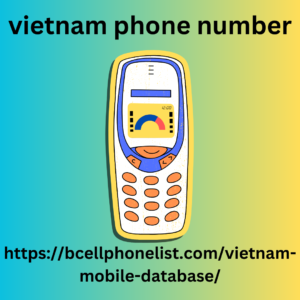|
|
Email marketing remains one of the most effective and direct ways to engage with your audience, promote products or services, and build customer relationships. In this comprehensive guide, we will explore the fundamentals of email marketing, best practices, and strategies to create successful campaigns that drive results.
What is Email Marketing?Email marketing involves sending targeted emails to a group of recipients to promote products, share news, or convey important information. It is a cost-effective digital marketing strategy that allows businesses to reach their audience directly, build relationships, and drive conversions.
Key Components of Email Marketing- Email List: Your email list is the foundation of your email marketing efforts. It consists of the contacts who have subscribed to receive your emails. Building a quality list is crucial for the success of your campaigns.
- Email Content: The content of your email should be relevant, engaging, and valuable to vietnam phone number your audience. This includes the subject line, body text, images, and call-to-action (CTA).
- Design: A well-designed email enhances readability and engagement. Use a responsive design to ensure your email looks good on both desktop and mobile devices.
- Segmentation: Segmenting your email list based on demographics, behavior, or preferences allows you to send more targeted and personalized emails.
- Automation: Email automation helps you send timely and relevant messages based on user actions, such as welcome emails, abandoned cart reminders, and follow-up emails.
Steps to Create an Effective Email Marketing CampaignStep 1: Define Your GoalsBefore you start your campaign, define your goals. What do you want to achieve with your email marketing? Common goals include:
- Increasing sales
- Driving traffic to your website
- Building brand awareness
- Promoting a new product or service
- Enhancing customer loyalty
Step 2: Build and Segment Your Email ListBuild your email list using various methods such as sign-up forms on your website, social media promotions, and lead magnets (e.g., free e-books, webinars). Ensure you obtain explicit consent from recipients to comply with regulations like GDPR.
Segment your list based on criteria such as:
- Demographics (age, gender, location)
- Purchase history
- Engagement level
- Interests and preferences

Step 3: Create Engaging ContentCraft compelling content that resonates with your audience. Here are some tips:
- Subject Line: Make it attention-grabbing and relevant to encourage opens.
- Personalization: Use the recipient’s name and tailor content to their interests.
- Clear CTA: Include a clear and prominent call-to-action that guides the recipient on what to do next.
- Visuals: Use high-quality images and graphics to enhance the visual appeal of your email.
Step 4: Design Your EmailDesign your email with a clean and responsive layout. Use a mobile-friendly design to ensure your email looks good on all devices. Keep the design simple and easy to navigate.
Step 5: Test and OptimizeBefore sending your email to your entire list, conduct A/B testing to determine what works best. Test different elements such as subject lines, CTAs, and visuals. Analyze the results and optimize your email for better performance.
Step 6: Send and MonitorOnce you’ve tested and optimized your email, send it to your segmented list. Monitor key metrics such as open rates, click-through rates, and conversions. Use this data to refine future campaigns.
Best Practices for Email Marketing- Compliance: Ensure your emails comply with regulations like GDPR and CAN-SPAM. Obtain explicit consent and include an easy way to unsubscribe.
- Frequency: Find the right balance in email frequency to avoid overwhelming your subscribers. Regularly assess engagement metrics to adjust your sending frequency.
- Content Value: Always provide value in your emails. Whether it’s educational content, special offers, or important updates, make sure your emails are worth the recipient’s time.
- Engagement: Encourage interaction by including links, buttons, and questions. The more engaged your audience is, the more likely they are to convert.
- Analytics: Regularly analyze your email marketing performance. Look at metrics like open rates, click-through rates, and conversion rates to understand what’s working and what’s not.
ConclusionEmail marketing is a powerful tool for connecting with your audience and driving business results. By following this comprehensive guide, you can create effective email marketing campaigns that engage your audience, build relationships, and achieve your marketing goals. Remember to continuously test, analyze, and optimize your emails to keep improving your strategy and maximizing your return on investment.
|
|
